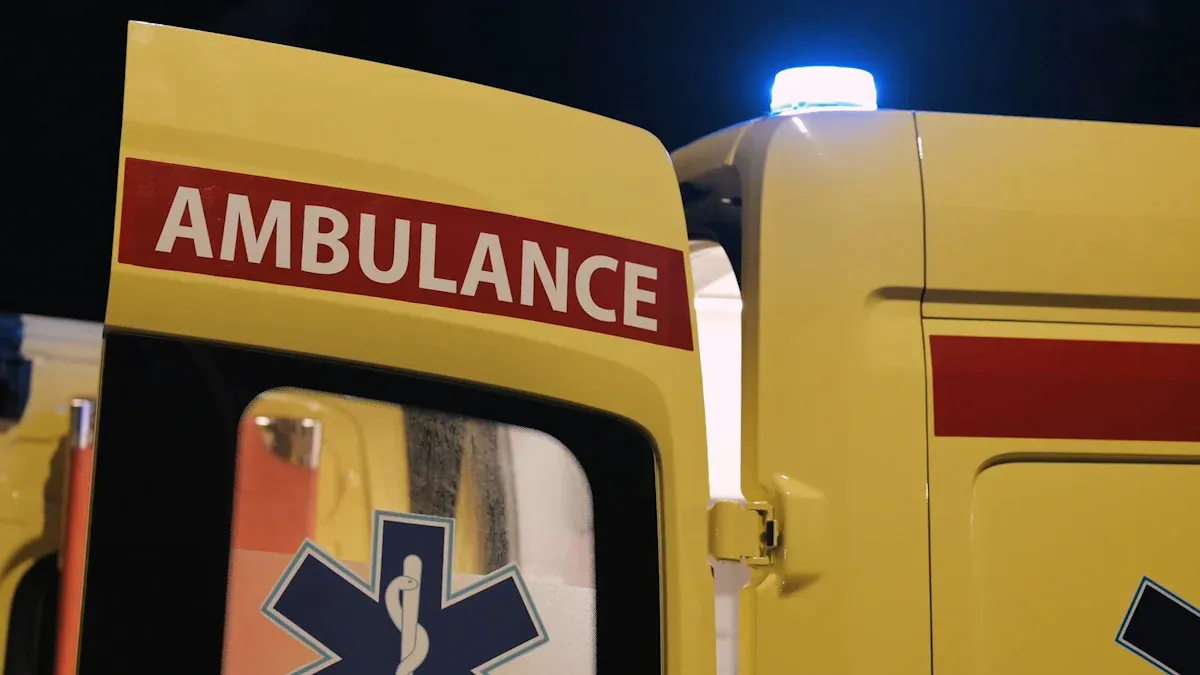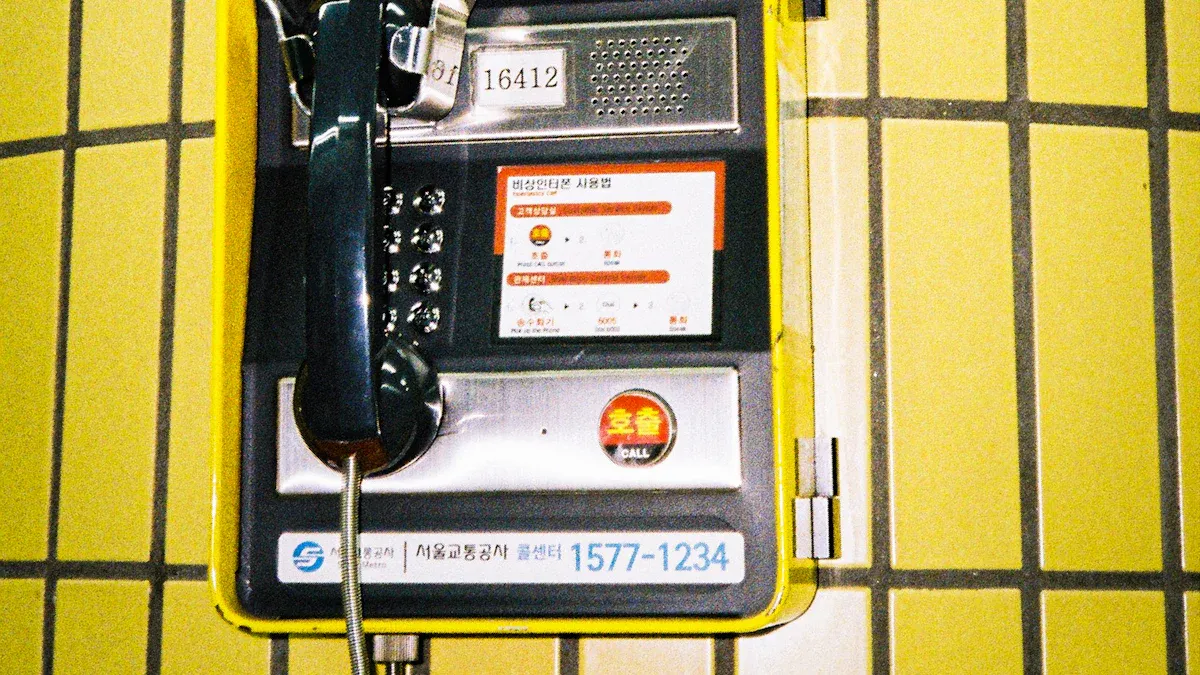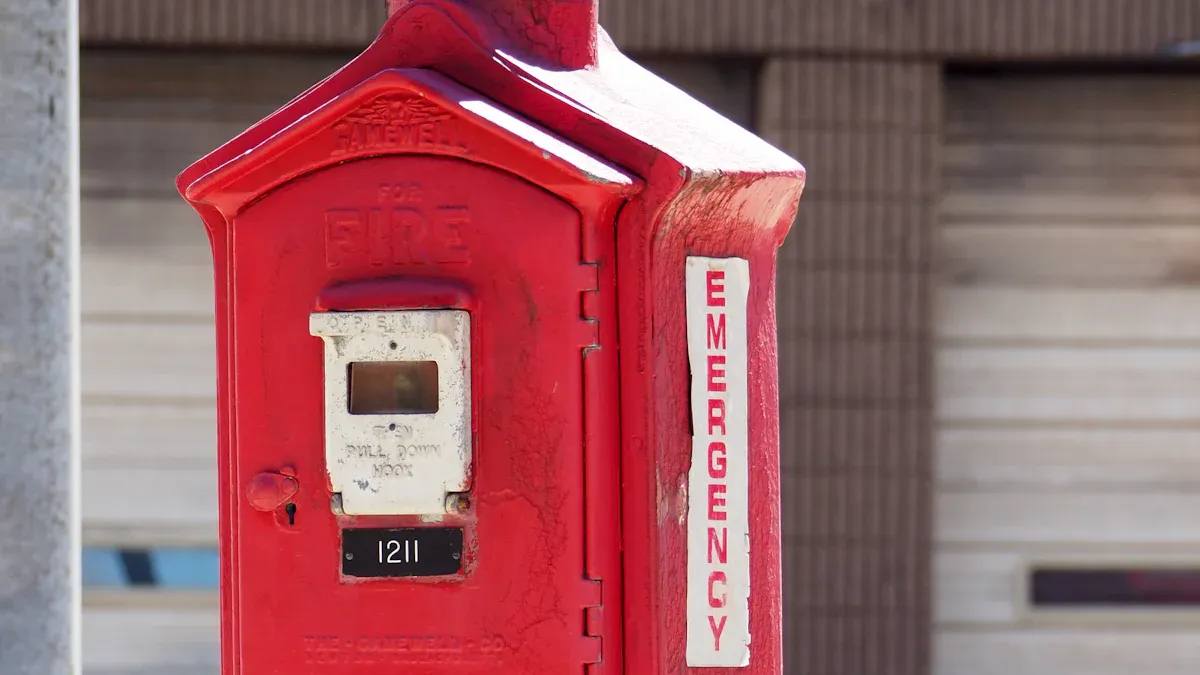
You need to consider several important factors before you select an Auto-dial Emergency Telephone. Look at the environment where you plan to install it. Check if the Emergency communication telephone fits your safety needs. Compare the Auto-dial Emergency Telephone price with your budget. Make sure the device works reliably when you need it most.
Key Takeaways
- Check the installation environment carefully to choose a phone that can handle weather, vandalism, and power needs.
- Match the phone’s features to the users’ needs, such as easy buttons, wheelchair access, and clear instructions.
- Look for important features like quick auto-dial, reliable power options, and strong weather resistance.
- Always verify the phone meets safety standards like ADA, FCC, and IP ratings to ensure it works well and stays legal.
- Compare brands for reliability, support, and warranty, and plan for proper installation and regular maintenance.
Identifying Your Auto-dial Emergency Telephone Needs
Assessing the Installation Environment
You need to look at where you plan to install the emergency phone. The environment can affect how well the device works. Start by checking if the area is indoors or outdoors. Outdoor locations face rain, dust, and extreme temperatures. Indoor spaces may have less risk, but you still need to think about humidity and possible vandalism.
Tip: Walk around the site before you choose a phone. Notice if the area has strong sunlight, water, or heavy traffic. These factors help you decide if you need a weatherproof or vandal-resistant model.
Make a list of possible hazards. For example:
- Water exposure (rain, sprinklers, or flooding)
- Dust or dirt
- Extreme heat or cold
- High foot traffic or risk of tampering
You should also check if you have access to power and phone lines. Some places may need a wireless option. Others may need a backup battery in case of power loss.
Understanding User Requirements
Think about who will use the Auto-dial Emergency Telephone. Some users may need large buttons or clear instructions. Others may need the phone to work with hearing aids or have a loud ringer.
Ask yourself these questions:
- Will children or elderly people use the phone?
- Do users speak different languages?
- Is the phone easy to reach for someone in a wheelchair?
You can use a table to compare user needs:
| User Group | Special Needs |
|---|---|
| Children | Simple operation |
| Elderly | Large buttons, volume |
| Disabled | Wheelchair access |
| Multilingual | Clear labels, symbols |
When you match the phone’s features to your users, you help everyone stay safe and get help fast.
Essential Features of Auto-dial Emergency Telephone

Auto-dial Functionality and Operation
You want an emergency phone that works quickly and easily. The auto-dial feature lets you press one button to call for help. You do not need to remember or enter a phone number. This feature saves time during an emergency.
Some Auto-dial Emergency Telephone models let you program several numbers. If the first number does not answer, the phone will try the next one. You can also find models with a hands-free speaker. This helps if you cannot hold the phone.
Tip: Test the auto-dial function after installation. Make sure it connects to the right emergency service every time.
A simple operation helps everyone use the phone, even if they feel scared or confused. Clear labels and voice prompts can guide users step by step.
Power and Connectivity Choices
You need to think about how the phone gets power and connects to emergency services. Some phones use a wired connection. Others use cellular networks. Wired phones often work well in places with stable phone lines. Cellular models work better in remote areas or where you cannot run cables.
You can choose from these power options:
- AC power (plugged into an outlet)
- Battery backup (keeps the phone working during power outages)
- Solar power (good for outdoor or remote locations)
A table can help you compare options:
| Power Source | Best For | Notes |
|---|---|---|
| AC Power | Indoors, stable power | Needs outlet |
| Battery | Backup, remote areas | Replace batteries regularly |
| Solar | Outdoor, no grid power | Needs sunlight |
Note: Always check the battery or power source. A dead battery means the Auto-dial Emergency Telephone will not work when you need it.
Durability and Weather Resistance
You want your emergency phone to last. Durability matters, especially in public or outdoor spaces. Look for phones with strong cases. Metal or heavy-duty plastic can protect against vandalism.
Weather resistance keeps the phone working in rain, snow, or heat. Many models have waterproof seals and covers. Some phones also resist dust and dirt.
You should check for these features:
- Waterproof rating (like IP65 or IP67)
- Vandal-resistant housing
- UV protection for sunlight
Callout: A durable Auto-dial Emergency Telephone gives you peace of mind. You know it will work in tough conditions.
Choose a model that matches your environment. A phone in a parking lot needs more protection than one in a quiet office.
Compliance with Safety Standards
You need to make sure your emergency phone meets all safety standards. These rules help protect users and make sure the phone works during an emergency. If you skip this step, you might face legal trouble or put people at risk.
Tip: Always ask for proof of compliance before you buy any emergency phone.
Why Safety Standards Matter
Safety standards set the minimum requirements for emergency equipment. They make sure the phone works in real emergencies. You also show that you care about user safety and follow the law.
Common Standards to Check
You should look for these important standards:
- ADA (Americans with Disabilities Act): This law makes sure people with disabilities can use the phone. The phone should have features like braille labels, volume control, and easy access for wheelchairs.
- FCC (Federal Communications Commission): Phones must meet FCC rules for communication devices. This ensures clear calls and reliable connections.
- IP Ratings (Ingress Protection): These ratings show how well the phone resists dust and water. For outdoor use, look for IP65 or higher.
- UL or ETL Certification: These marks show the phone passed safety tests for electrical devices.
Here is a table to help you compare:
| Standard | What It Means | Why It Matters |
|---|---|---|
| ADA | Access for all users | Helps everyone in emergencies |
| FCC | Reliable communication | Clear calls every time |
| IP65/IP67 | Dust and water resistance | Works in tough weather |
| UL/ETL | Electrical safety | Prevents shocks and fires |
How to Check for Compliance
You can ask the seller for certificates or test reports. Read the product manual for details about standards. Some phones have labels or marks that show compliance.
Alert: Never assume a phone meets standards just because it looks strong. Always check the paperwork.
Local and Industry Rules
Some places have extra rules. Schools, hospitals, and factories may need special features. You should talk to local safety officers or inspectors before you buy.
You can use this checklist:
- [ ] Does the phone meet ADA rules?
- [ ] Is there an FCC label?
- [ ] Does it have the right IP rating?
- [ ] Can you see UL or ETL marks?
- [ ] Are there any local rules to follow?
When you choose an Auto-dial Emergency Telephone that meets all safety standards, you help protect everyone who might need help. You also avoid fines and problems with the law.
Comparing Auto-dial Emergency Telephone Models and Brands

Evaluating Reliability and Support
You want a phone that works every time you need it. Start by checking the brand’s reputation. Look for reviews from other users. Reliable brands often have many positive reviews and few complaints. You can also ask for references from the seller.
Support matters, too. Good brands offer clear manuals and easy-to-reach customer service. If something goes wrong, you want help fast. Some brands provide 24/7 support or online chat. Others may only offer email help.
Here are some things to check:
- Warranty length (longer is better)
- Availability of spare parts
- Response time for repairs
- User manuals and online guides
Tip: Call the support line before you buy. See how quickly they answer and if they help with your questions.
A table can help you compare brands:
| Brand | Warranty | Support Hours | User Reviews |
|---|---|---|---|
| Brand A | 3 years | 24/7 | ⭐⭐⭐⭐⭐ |
| Brand B | 1 year | Business hrs | ⭐⭐⭐ |
| Brand C | 2 years | 24/7 | ⭐⭐⭐⭐ |
Analyzing Cost and Value
You should not pick the cheapest phone without checking its value. Price is important, but you also need to think about what you get for your money. Some phones cost more because they last longer or have better features.
Ask yourself:
- Does the price include installation?
- Are there extra fees for support or updates?
- How long will the phone last before you need a new one?
You can use a checklist to compare value:
- [ ] Strong build quality
- [ ] Good warranty
- [ ] Helpful support
- [ ] Features you need
Note: A higher price can save you money in the long run if the phone lasts longer and needs fewer repairs.
Always balance cost with quality and support. This helps you make a smart choice for your safety needs.
Final Steps in Selecting Your Auto-dial Emergency Telephone
Selection Checklist
Before you make your final choice, use a checklist to make sure you have covered all important points. This step helps you avoid missing any key detail. Here is a simple checklist you can follow:
- Check the environment where you will install the phone.
- Confirm the phone meets all safety and compliance standards.
- Make sure the phone has the features your users need.
- Review the power and connectivity options.
- Compare brands for reliability and support.
- Look at the warranty and available customer service.
- Calculate the total cost, including installation and maintenance.
Tip: Print this checklist and bring it with you when you shop or talk to suppliers. It helps you stay organized and focused.
You can also create your own table to compare different models side by side. This makes it easier to see which phone fits your needs best.
| Feature | Model 1 | Model 2 | Model 3 |
|---|---|---|---|
| Weatherproof | Yes | No | Yes |
| ADA Compliant | Yes | Yes | No |
| Battery Backup | Yes | Yes | Yes |
| Warranty (years) | 3 | 2 | 1 |
Installation and Maintenance Planning
After you select your emergency phone, plan for installation and regular maintenance. Good planning keeps your phone working when you need it most.
Start by choosing a visible and easy-to-reach spot. Make sure users can find the phone quickly in an emergency. If you install the phone outdoors, use a weatherproof cover. Indoors, place the phone near exits or high-traffic areas.
Schedule regular checks to test the phone’s operation. Replace batteries or check power sources often. Clean the phone and inspect for damage. Keep a log of all maintenance activities.
Note: Regular maintenance helps you catch problems early. You can fix small issues before they become big ones.
If you follow these steps, you help ensure your emergency phone stays reliable and ready to use.
You can choose the right emergency phone by following a few clear steps. First, look at your environment and user needs. Next, check for important features and safety standards. Compare brands for reliability and support. Always plan for easy installation and regular maintenance.
Remember: The best choice matches your needs and keeps everyone safe. Focus on quality, compliance, and long-term value.
FAQ
What happens if the power goes out?
Most Auto-dial Emergency Telephones have a battery backup. This feature keeps the phone working during a power outage. You should check the battery often to make sure it stays charged.
Can you install an Auto-dial Emergency Telephone outdoors?
Yes, you can install these phones outdoors. Look for models with weatherproof and vandal-resistant features. These phones work well in rain, snow, and extreme temperatures.
How do you test if the emergency phone works?
You can press the emergency button to make a test call. Listen for a clear connection. Check the speaker and microphone. Many experts suggest testing the phone every month.
Do you need special training to use an Auto-dial Emergency Telephone?
No, you do not need special training. Most phones use simple buttons and clear labels. Anyone can use them in an emergency. You can post easy instructions nearby for extra help.
Post time: Jun-18-2025
